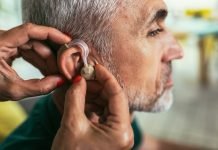
The opioid crisis in America is a complex and tragic issue that has unfolded in several waves since the 1990s. Each wave has been associated with an increase in overdose deaths.
The first wave was tied to the misuse of prescription opioid medications.
This led to the implementation of a policy that made prescription opioids more challenging to access, giving birth to prescription drug monitoring programs (PDMPs).
However, the introduction of PDMPs, which track the prescribing of controlled substances, had unintended consequences.
As access to prescription opioids became more difficult, people started seeking unregulated opioids, exposing them to a higher risk of accidental death.
This phenomenon resulted in the second wave of the crisis, characterized by a spike in heroin-related deaths around 2010. The third wave, which commenced in 2013, was fueled by synthetic opioids like fentanyl.
The Study’s Findings
A new study conducted by Rutgers University suggests that increasing access to prescription opioids may actually reduce opioid overdose deaths in the U.S.
The research team led by Grant Victor, an assistant professor at the Rutgers School of Social Work, examined data from 2,682 accidental overdose deaths that occurred from 2016 to 2021 in Indianapolis, Indiana.
They found that fewer than half of all decedents had any PDMP record, indicating they hadn’t even tried to access prescription opioids.
Among those who had been prescribed buprenorphine, a common treatment for opioid use disorder, most weren’t actively seeking treatment at the time of their death.
The research also uncovered racial disparities in prescription trends. Black individuals were significantly less likely to be prescribed buprenorphine and opioid painkillers than their white counterparts.
The Benefits and Barriers of Buprenorphine
Buprenorphine treatment is associated with significantly reduced rates of nonfatal and fatal overdose. However, several barriers are hindering its widespread adoption in the U.S., including stigma and cost.
As a result, the lack of adequate buprenorphine prescribing, coupled with a decrease in the availability of opioid analgesics, has left individuals battling opioid use disorder at a heightened risk of overdose.
Policy Reevaluation
Given these findings and previous research, Victor argues that it’s time to reassess policies that make obtaining opioid prescriptions extremely difficult, even for those with a legitimate need.
He contends that the struggle with addiction in the U.S. is largely because people can’t access legal pain medication.
His study advocates a policy change, suggesting that restoring easier access to prescription opioid pain medications might protect against fatal overdoses.
It’s a counterintuitive yet potentially effective solution that could reshape how we approach the opioid crisis.
However, careful monitoring and regulation would still be necessary to ensure the correct and responsible use of these powerful medications.
If you care about health, please read studies that scientists find a core feature of depression and that this metal in the brain is strongly linked to depression.
For more information about health, please see recent studies about drugs for mental health that may harm the brain, and results showing this therapy is more effective than ketamine in treating severe depression.
The study was published in the Journal of Substance Use and Addiction Treatment.
Copyright © 2023 Knowridge Science Report. All rights reserved.




